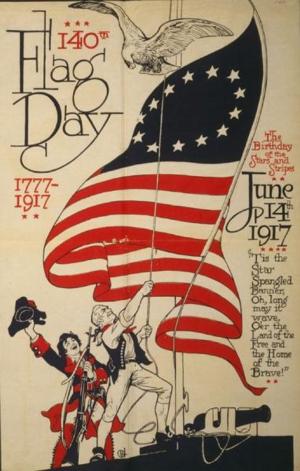| Author: | Mary FitzGibbon | ISBN: | 9781465510198 |
| Publisher: | Library of Alexandria | Publication: | March 8, 2015 |
| Imprint: | Language: | English |
| Author: | Mary FitzGibbon |
| ISBN: | 9781465510198 |
| Publisher: | Library of Alexandria |
| Publication: | March 8, 2015 |
| Imprint: | |
| Language: | English |
The Canada Pacific Railway, so frequently referred to in the following pages, is now almost an accomplished fact. It will, after traversing for over a thousand miles the great prairies of the Swan River and Saskatchewan territories, thread the Rocky Mountains and, running through British Columbia to Vancouver’s Island, unite the Pacific with the Atlantic. Of the value of this line to the Dominion and the mother country there cannot be two opinions. The system of granting plots of land on each side of the railway to the Company, with power to re-sell or give them to settlers, has been found most advantageous in, as it were, feeding the line and creating populations along its route. The cars which carry to distant markets the crops raised by the settlers, bring back to them the necessaries of civilized life. Readers who ask with the post-office authorities, “Where is Manitoba?” [Footnote: Pages 58, 59] may be answered that Manitoba is a province in the great north-west territory of the Canadian Dominion, lying within the same parallels of latitude as London and Paris. It has one of the most healthy climates in the world—the death-rate being lower than in any other part of the globe,—and a soil of wondrous fertility, sometimes yielding several crops in one year. Immense coal-fields exist within the province; its mountains abound with ore; and its natural wealth is enormous. While the province of Manitoba formed part of the Hudson Bay Company’s territory, its resources were undeveloped. But in 1869 it was transferred to the Dominion Government, and received a Lieutenant-Governor and the privilege of sending representatives to the Parliament at Ottawa. Under the new regime enterprise and industry are amply encouraged. The original population consisted chiefly of Indians and French half-breeds; the abolition of the capitation tax on immigrants, however, has resulted in a large immigration of Europeans, who, with health and energy, cannot fail to prosper, especially as they are without European facilities for squandering their money in luxury or intoxication. Of how universally the Prohibitory Liquor Law prevails in Manitoba, and yet how difficult it sometimes is to punish its infraction, an amusing instance in given in Chapter XI. Mr. Alexander Rivington, in a valuable pamphlet now out of print (“On the Track of our Emigrants”), says that when he visited Canada it was rare to see such a thing as mendicity—too often the result of intemperance; “the very climate itself, so fresh and life-giving, supplies the place of strong drink. Public-houses, the curse of our own country, have no existence. Pauperism and theft are scarcely known there—income-tax is not yet dreamt of.” Free grants of one hundred acres of prairie and meadow land are still being made to immigrants, and the population is rapidly increasing
The Canada Pacific Railway, so frequently referred to in the following pages, is now almost an accomplished fact. It will, after traversing for over a thousand miles the great prairies of the Swan River and Saskatchewan territories, thread the Rocky Mountains and, running through British Columbia to Vancouver’s Island, unite the Pacific with the Atlantic. Of the value of this line to the Dominion and the mother country there cannot be two opinions. The system of granting plots of land on each side of the railway to the Company, with power to re-sell or give them to settlers, has been found most advantageous in, as it were, feeding the line and creating populations along its route. The cars which carry to distant markets the crops raised by the settlers, bring back to them the necessaries of civilized life. Readers who ask with the post-office authorities, “Where is Manitoba?” [Footnote: Pages 58, 59] may be answered that Manitoba is a province in the great north-west territory of the Canadian Dominion, lying within the same parallels of latitude as London and Paris. It has one of the most healthy climates in the world—the death-rate being lower than in any other part of the globe,—and a soil of wondrous fertility, sometimes yielding several crops in one year. Immense coal-fields exist within the province; its mountains abound with ore; and its natural wealth is enormous. While the province of Manitoba formed part of the Hudson Bay Company’s territory, its resources were undeveloped. But in 1869 it was transferred to the Dominion Government, and received a Lieutenant-Governor and the privilege of sending representatives to the Parliament at Ottawa. Under the new regime enterprise and industry are amply encouraged. The original population consisted chiefly of Indians and French half-breeds; the abolition of the capitation tax on immigrants, however, has resulted in a large immigration of Europeans, who, with health and energy, cannot fail to prosper, especially as they are without European facilities for squandering their money in luxury or intoxication. Of how universally the Prohibitory Liquor Law prevails in Manitoba, and yet how difficult it sometimes is to punish its infraction, an amusing instance in given in Chapter XI. Mr. Alexander Rivington, in a valuable pamphlet now out of print (“On the Track of our Emigrants”), says that when he visited Canada it was rare to see such a thing as mendicity—too often the result of intemperance; “the very climate itself, so fresh and life-giving, supplies the place of strong drink. Public-houses, the curse of our own country, have no existence. Pauperism and theft are scarcely known there—income-tax is not yet dreamt of.” Free grants of one hundred acres of prairie and meadow land are still being made to immigrants, and the population is rapidly increasing















